The Great Monarch Butterfly Migration
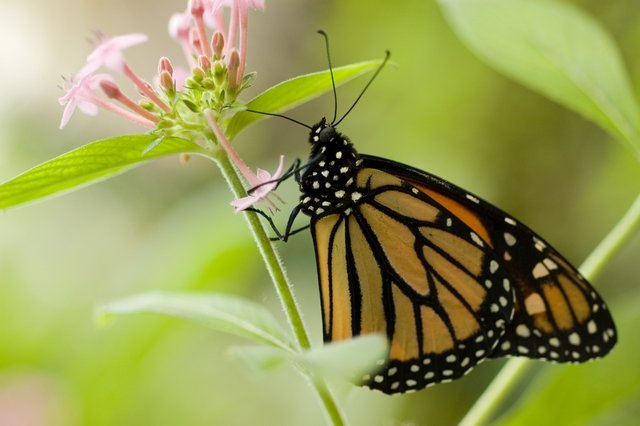
Last year, I joined Monarch Watch, an outreach program founded in 1992 to focus on education, research, and conservation related to monarch butterflies. At this time of year, they send great updates to their followers on the status of the butterfly migration. It's called "one of the most spectacular natural phenomena in the world."
You can probably identify a monarch butterfly. In fact, when we think of butterflies, the monarch is an iconic symbol with its orange, black, and white wings. But did you know that it wasn't until 1975 that researchers discovered a vital missing part of their lifecycle?
You see, it was in that year that, as a result of a tagging program, scientists discovered that monarchs from as far away as southern Canada overwintered high in the Mexican mountains. They were discovered in a comparatively small area of Oyamel fir tree forests on the east side of the Mexican state of Michoacán in Central Mexico. The discovery was anounced in a 1976 issue of National Geographic magazine.
The word for a group of butterflies is a 'kaleidoscope'.
'Swarm' is often used but it isn't as descriptive.
'Swarm' is often used but it isn't as descriptive.
As the monarchs head south, they are joined by others. By the time they reach Mexico, the sky is covered with a kaleidoscope of millions of butterflies 50 miles (80 km) wide. It must be a glorious site. Naturally, the Mexicans were aware of the migration but no one knew where it started.
In the language of the native Purépecha Indians, the monarch butterfly is the harvester butterfly because it appears when it's time to harvest corn. Their migration also coincides with Día de los Muertos, or Day of the Dead, celebrated from October 31st to November 2nd. According to the traditional belief among the Michoacán Mazahuas people, monarch butterfies are the souls of ancestors returning for their annual visit. It's a time to celebrate the holidays and the migration.
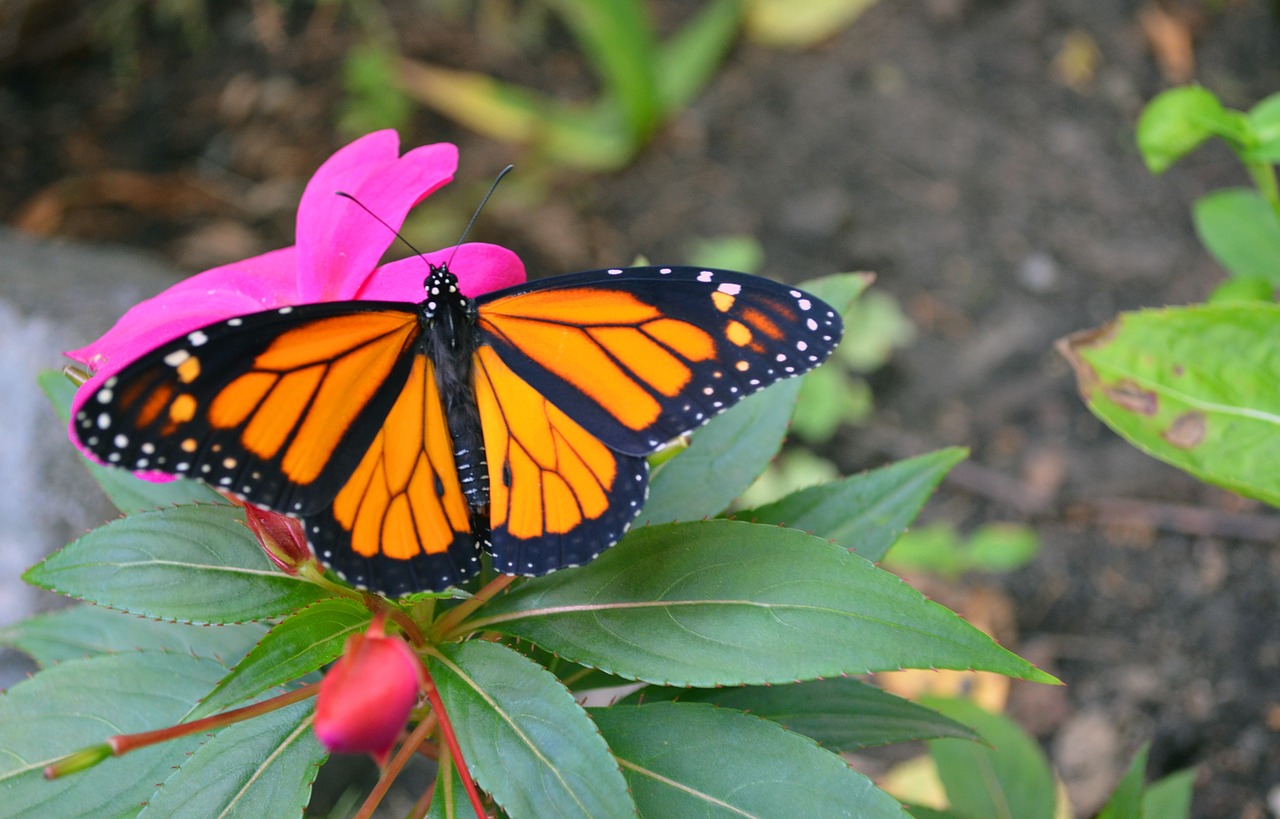
The photo above shows a male monarch. You can identify the male by the single spot he has in a vein on each of his lower wings. His veins are also narrower and he is larger than the female.
In 1986, the Mexican government established a number of protected sanctuaries to create the Monarch Butterfly Biosphere Reserve, a 350 square mile (560 square km) area that since 2008 has been recognized by UNESCO as a World Heritage Site.
One of the best updates I received from Monarch Watch this spring was when volunteers went up to the reserves to check on the overwintering monarchs. This was the first check following the harshest part of the winter and it was good news. They sent photos of trees dripping with monarchs. Branches sometimes break under their combined weight. Consider this for a moment when the average monarch weighs less than 1/5 of an ounce (5.67 grams.)

The butterflies that overwinter are a special generation and they have been through a lot. Most monarchs live 3-4 weeks. These ones live 8 months. These ones were born in the late summer of the previous year and migrated to Mexico. They overwinter in the reserves, clustered together on the trees for warmth, leaving occasionally for nectar and water on warmer days. The large fir trees provide a microclimate that moderates the temperature, protecting the insects. The butterflies stay there for almost 5 months. When spring arrives and temperatures start to rise again, they come out of their hibernation and search for water. At some point, they start clustering and then they start the trek back north.
Now you are probably used to birds that migrate south for the winter and return north in the spring. At first, it must have been assumed that the monarch migration worked that way too, but no. These butterflies stop to mate and lay eggs in Texas. With that done, they will die. The next generation continues the journey - we will call them generation one, and this repeats. The third or fourth generation arrives in Canada.
Let's take a look at their lifecycle.
The female butterfly seeks out milkweed plants and lays small clusters of eggs on many plants, 300-400 eggs altogether. She does this because milkweed plants are the only food the hatching caterpillars eat. It is also known for making the adult butterfly taste bitter and less desirable to predators.
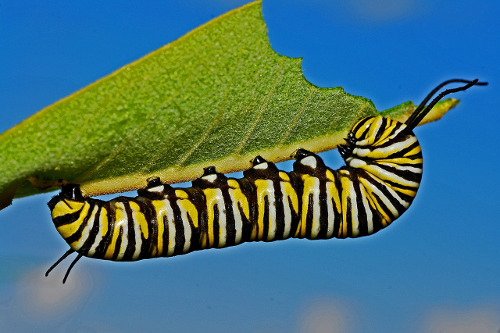
The eggs hatch in several days and a tiny yellow, white, and black caterpillar emerges. Feeding on the milkweed, it will outgrow and sheds its skin four times. On the fifth time, the caterpillar disappears and there is a chrysalis in its place. It's made from hardened protein and is differentiated from a cocoon that a caterpillar weaves. It takes ten days for the pupa inside its green chrysalis to change into a butterfly. The day before it emerges, the chrysalis becomes transparent and the butterfly's wings can be seen inside. When the butterfly emerges, it must wait for its wings to harden before it can fly.
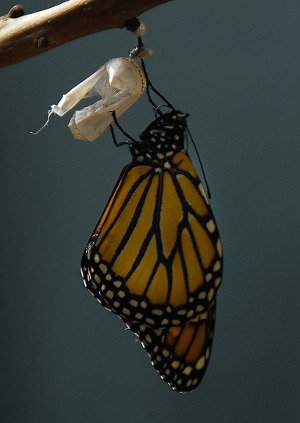
The Great Migration
It is thought that migrating north may have originally started to take advantage of emerging milkweeds. Certainly travelling south is to escape the cold. But how does an insect navigate up to 2,000 miles (5,000 km), some averaging 50 miles (80 km) per day, to a place where it has never been?
Being so fragile, the butterflies only fly on clear days to avoid rain and heavy winds. They take two months to make the journey aided on their southern trip by tail winds. Scientists only recently discovered that they navigate using the sun. You can read about the mechanics of that here.
As mentioned earlier, the generation that flies south will return to Texas to lay their eggs. The resulting butterflies continue the migration north, also stopping to lay their eggs. In short, one generation flies south but it takes takes 3-4 to go north. (By the way, generation 1 is hatching now.)
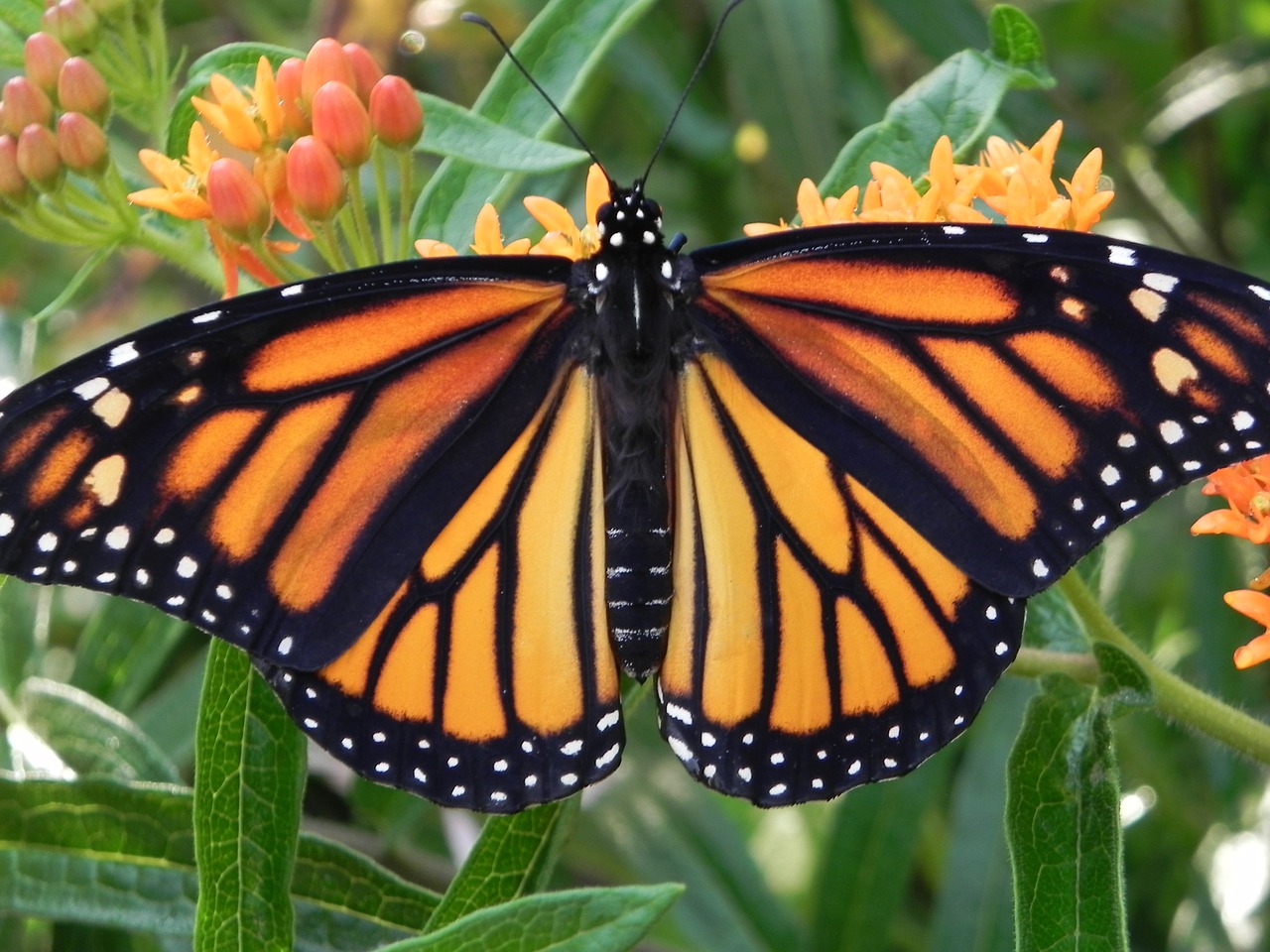
This photo above is of the female. She is slightly smaller than the male and the veins in her wings are thicker. She doesn't have the spot in the vein on her lower wings that the male has.
It is truly a wonder that a fragile butterfly such as this with a wingspan of 4" (10.16 cm)and weighing less than 1/5th of an ounce (5.67 grams) can make a journey that long, overwinter for 5 months and then still make a significant trip before laying eggs.
Do all monarchs migrate?
There are monarch butterflies that don't migrate or migrate much shorter distances. Monarch butterflies are found worldwide as three species, six subspecies and two colour morphs. (There is a white monarch found in Oahu, Hawaii.)
Danaus Plexippus is the common species known as the monarch butterfly of North America. The monarchs that migrate are a subspecies, Danaus Danaus Plexippus, found east of the Rocky Mountains, north of Georgia, and extending into southern Canada. Monarchs found in warmer climates don't need to escape the cold.
Have you wondered how they tag a butterfly?
The tags are printed with waterproof ink on polypropylene with a special adhesive. They have a unique number, a toll-free telephone number, and an e-mail address so a recovered tag can be reported. Citizen scientists are recruited to help tag butterflies and this is how it is done.
Now I want to show you something very special. As citizen scientists, we are encouraged to grow milkweed plants for the monarch caterpillars - this is a photo of my patch. It was three years old last summer when I spotted its first visiting monarch. I'm hoping for caterpillars this year. Monarch Watch tells me the butterflies are on their way.
References
The Incredible Story of the Monarch Butterflies - documentary
Monarch Watch
Great monarch butterfly migration mystery solved
Monarch butterfly migration - Wikipedia
Monarch Butterflies in Mexico
Geographical Populations and "Subspecies" of New World Monarch Butterfies
Images
All but the last photo is by Pixabay.
The last photo is from the iPad of @kansuze.

@kansuze
Hi @kansuze, I just stopped back to let you know your post was one of my favourite reads and I included it in my Paddling Nature Ramble. You can read what I wrote about your post here.
Thank you!
Great read, this is on my Bucket List!
Glad you enjoyed it.
Super post. Good research.
Your Post Has Been Featured on @Resteemable!
Feature any Steemit post using resteemit.com!
How It Works:
1. Take Any Steemit URL
2. Erase
https://3. Type
reGet Featured Instantly & Featured Posts are voted every 2.4hrs
Join the Curation Team Here | Vote Resteemable for Witness
@ginnyannette nominated in the Pay It Forward contest is what brought me to your post
very interesting . well researched post
Nice, interesting post, when I was a child on our farm, we saw plenty of Monarchs, today, although I live in the burbs, but spend a lot of time outdoors, I see very few.
Same here. I was from rural southwestern Ontario. I used to go search the milkweed plants for eggs and one year we had 4 chrysalises in a terrarium in school.
That really does work I started milkweed at my place. We had monarchs the very next year! I was pretty excited, everyone else thought I was nuts 🙃
I was sent by @ginnyannette to spread the #payitforward love
I don't know how the monarch ever found it.
What an interesting post. I see them frequently where I live in Florida.
I'm glad you enjoyed it. :-)
Congratulations @kansuze! You have completed some achievement on Steemit and have been rewarded with new badge(s) :
Click on any badge to view your own Board of Honor on SteemitBoard.
To support your work, I also upvoted your post!
For more information about SteemitBoard, click here
If you no longer want to receive notifications, reply to this comment with the word
STOP